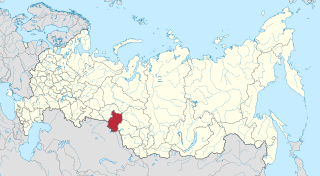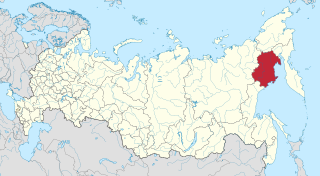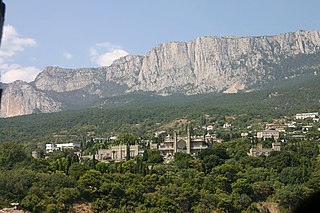
Omsk Oblast is a federal subject of Russia, located in southwestern Siberia. The oblast has an area of 139,700 square kilometers (53,900 sq mi). Its population is 1,977,665 with the majority, 1.12 million, living in Omsk, the administrative center.

Kemerovo Oblast — Kuzbass, also known simply as Kemerovo Oblast or Kuzbass (Кузба́сс), after the Kuznetsk Basin, is a federal subject of Russia. Kemerovo is the administrative center and largest city of the oblast. Kemerovo Oblast is one of Russia's most urbanized regions, with over 70% of the population living in its nine principal cities. Its ethnic composition is predominantly Russian, but Shors, Ukrainians, Tatars, and Chuvash also live in the oblast. The population recorded during the 2010 Census was 2,763,135.

Yaroslavl Oblast is a federal subject of Russia, which is located in the Central Federal District, surrounded by the Tver, Moscow, Ivanovo, Vladimir, Kostroma, and Vologda oblasts.

Ivanovo Oblast is a federal subject of Russia. It had a population of 927,828 as of the 2021 Russian Census.

Saratov Oblast is a federal subject of Russia, located in the Volga Federal District. Its administrative center is the city of Saratov. As of the 2010 Census, its population was 2,521,892.

Nizhny Novgorod Oblast is a federal subject of Russia. Its administrative center is the city of Nizhny Novgorod. It has a population of 3,310,597 as of the 2010 Census. From 1932 to 1990 it was known as Gorky Oblast.

Kirov Oblast is a federal subject of Russia located in Eastern Europe. Its administrative center is the city of Kirov. As of the 2021 census, the population is 1,153,680.

Tyumen Oblast is a federal subject of Russia. It is located in Western Siberia, and is administratively part of the Urals Federal District. The oblast has administrative jurisdiction over two autonomous okrugs: Khanty-Mansi Autonomous Okrug and Yamalo-Nenets Autonomous Okrug. Tyumen Oblast, including its autonomous okrugs, is the third-largest federal subject by area, and has a population of 3,395,755 (2010).

Astrakhan Oblast is a federal subject of Russia located in southern Russia. Its administrative center is the city of Astrakhan. As of the 2010 Census, its population was 1,010,073.

Volgograd Oblast is a federal subject of Russia, located in the lower Volga region of Southern Russia. Its administrative center is Volgograd. The population of the oblast was 2,610,161 in the 2010 Census.

Kursk Oblast is a federal subject of Russia. Its administrative center is the city of Kursk. As of the 2021 Census, Kursk Oblast has a population of 1,082,458.

Lipetsk Oblast is a federal subject of Russia. Its administrative center is the city of Lipetsk. As of the 2021 Census, its population was 1,143,224.

Tula Oblast is a federal subject of Russia. It is geographically located in European Russia and is administratively part of the Central Federal District, covering an area of 25,700 square kilometers (9,900 sq mi). It has a population of 1,553,925 (2010 Census). Tula is the largest city and the administrative center of the oblast.

Tambov Oblast is a federal subject of Russia. Its administrative center is the city of Tambov. As of the 2010 Census, its population was 1,091,994.

Smolensk Oblast, informally also called Smolenschina (Смоленщина), is a federal subject of Russia. Its administrative centre is the city of Smolensk. As of the 2021 Census, its population was 888,421.

Oryol Oblast, also known as Orlovshchina (Орловщина), is a federal subject of Russia. Its administrative center is the city of Oryol. Population: 713,374 (2021 Census); 786,935 (2010 Census);

Magadan Oblast is a federal subject of Russia. It is geographically located in the Far East region of the country, and is administratively part of the Far Eastern Federal District. Magadan Oblast has a population of 136,085, making it the least populated oblast and the third-least populated federal subject in Russia.

Alupka is a resort city located in the Crimean peninsula, a territory of Ukraine currently annexed by Russian Federation. It is located 17 km (11 mi) to the west of Yalta. It is famous for the Vorontsov Palace, designed by English architect Edward Blore in an extravagant mixture of Scottish baronial and Neo-Moorish styles and built in 1828–1846 for prince Mikhail Semyonovich Vorontsov.
Population: 7,771 , 8,087 (2021).
Area: 4.2246 km2.
Sister-city: Apopka, Florida, USA.
Sovetsky is an urban locality in Vyborgsky District of Leningrad Oblast, Russia. It is situated on the eastern shore of the Gulf of Vyborg on the Karelian Isthmus. Population: 7,131 (2010 Census); 6,607 (2002 Census); 6,471 (1989 Census).

Preobrazheniye is an urban locality in Lazovsky District of Primorsky Krai, Russia, located on the Preobrazheniye Bay of the Sea of Japan. Population: 7,184 (2010 Census); 9,335 (2002 Census); 12,213 (1989 Census).



















